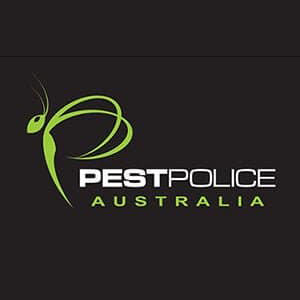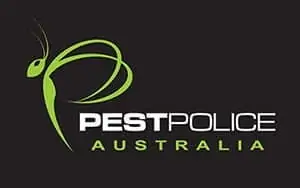Birds play an important role in the ecosystem and most of them are a joy to watch. Sadly, not every species is fun to have around. Some introduced ones have inevitably become pests. Even some native birds have become less welcome on certain occasions.
With an increasingly bothersome presence, the need to call pest control experts have become necessary in residential and commercial properties across Australia.
Some birds have built a reputation of being a nuisance to businesses. Meanwhile, some species invade residences through damaged roofing or loading bay areas. Once they gain entry into your space, they may cause any of these problems:
-
- Property Damage
Bird droppings aren’t something property owners should underestimate. For one, they’re known to stop gutters and downpipes, causing roofs to leak in the process. It’s no exaggeration when statistics say that birds living within roofs cut the roof’s service life dramatically. Not only that but droppings cause rust and corrosion as their uric acid content negatively impacts car paint, machinery, and a building’s exterior surfaces.
-
- A Vector for Diseases
The fact that some of the deadliest diseases in recent years have been spread around by birds should be enough reason to keep your distance from them. Among the known diseases associated with birds are bird flu (H5N1 virus), histoplasmosis, encephalitis, aspergillosis, cryptococcosis, toxoplasmosis, and candidiasis (just to name a few). Some fungal diseases are closely linked to bird droppings, too.
-
- Food and Feed Contamination
Although pest bird species don’t directly consume the food they spoil, they’re capable of contaminating vast amounts. When their droppings fall into livestock feed, the harmful organisms in them can find their way into our kitchens. This is why food contaminated by birds is typically discarded. It isn’t just their droppings that can contaminate our food, though. Even debris from bird nests, feathers, and ectoparasites can adversely affect our food source.
-
- Pest Carriers
Harmful insects, including mites and ticks, can invade our dwellings through birds that carry such pests. Carpet beetles, bed bugs, red poultry mites, clothes moths, pigeon ticks, larder beetles, tropical fowl mites, lesser house flies, and others—these are just some of the pests that birds can carry along wherever they go.
-
- Defacement
A quick look outside your window will show you how much bird droppings can make buildings, houses, and properties look unsightly. Worse if these fall into tools, machinery, clothing, and structural timbers, which could eventually damage the said objects. Leave them be and the moist droppings can become the place where flies breed and grow, giving you more headache in the process.
-
- Crop Destruction
If you run a farm, birds are a major threat. Pest birds, including some native species, cause severe damage to crops and produce like apples, grains, grapes, sunflowers, and cherries. Even if you’re not managing a farm, invasive species can feed on your garden produce and stored grains right under your nose.
-
- General Disturbance
Starlings will create considerable noise when roosting at a particular time in the year. For sure, you’ll suffer sleepless nights as their level of activity increases. Meanwhile, gregarious birds that form large flocks can drop their waste onto footpaths, fire escapes, and steps, rendering them dangerous to foot traffic.
By recognising the signs of a serious bird infestation, you can get an immediate solution to the problem and reduce the time you need to control invasive pest birds. A few common signs to watch out include the following:
- Bird noises e.g. continuous bird cries, especially from chicks
- Bird nests or nest materials strewn all around your premises
- Bird settling on ledges and roofs
- Droppings (often concentrated in an area where the birds roost)
- Nest debris and feathers blocking gutters and drainages
When you suspect there are uninvited birds sharing your personal or commercial space, you need to know where to find them. That way, it’d be easier to deal with the growing pest bird population.
In most cases, ledges, balconies, gutters, culverts, and chimney stacks are areas that birds love to build their nest in. Any gap larger than 25mm that grants access to your building can also become a potential entry point for some species like pigeons. Flat roofs and tall buildings, meanwhile, may draw the attention of pigeons and seagulls.
Once you spot an ongoing bird infestation, take the time to identify the pest birds you’re dealing with. Here are the common ones you’ll likely find in your investigation:
-
- House sparrow
Widely distributed throughout eastern Australia, including Tasmania, this sparrow can be a considerable threat to gardens, orchards, and buildings where it constructs its nest. Its nest made of twigs, paper, grass, or rags are often built in gutters, on building ledges, and roofs.
-
- Indian myna
Found around Sydney and the country areas of New South Wales, Adelaide, Melbourne, northern Tasmania, and eastern Queensland, the Indian or common myna was introduced from Europe back in 1863 to control locust and cane beetles. Having outlived their initial purpose, the birds have begun displacing native birds from their natural habitat. Not only that, Indian mynas are known to spread mites and weed from their nests as well as damage fruit crops.
-
- Feral pigeon
Surprisingly, these birds aren’t that widespread in country areas and that’s because they’re largely dependent on humans for survival. With their close proximity to human dwellings, you’ll often find them defacing buildings, cars, and statues (occasionally on people) with their droppings. Their nests also obstruct drainpipes and gutters, especially when they flock a particular building. With them possibly harbouring virulent diseases like aspergillosis and encephalitis, it’s important to keep pigeon populations at bay.
It’s worth mentioning that pest control companies aren’t allowed by law to eradicate native species e.g. Indian Mynas, magpies, cockatoos, ibises, currawongs, ducks, etc.
Spotted a growing bird population near your home or office? Call our bird control experts and let our extensive experience and up-to-date processes solve your bird problems without disrupting your business and harming the birds.

